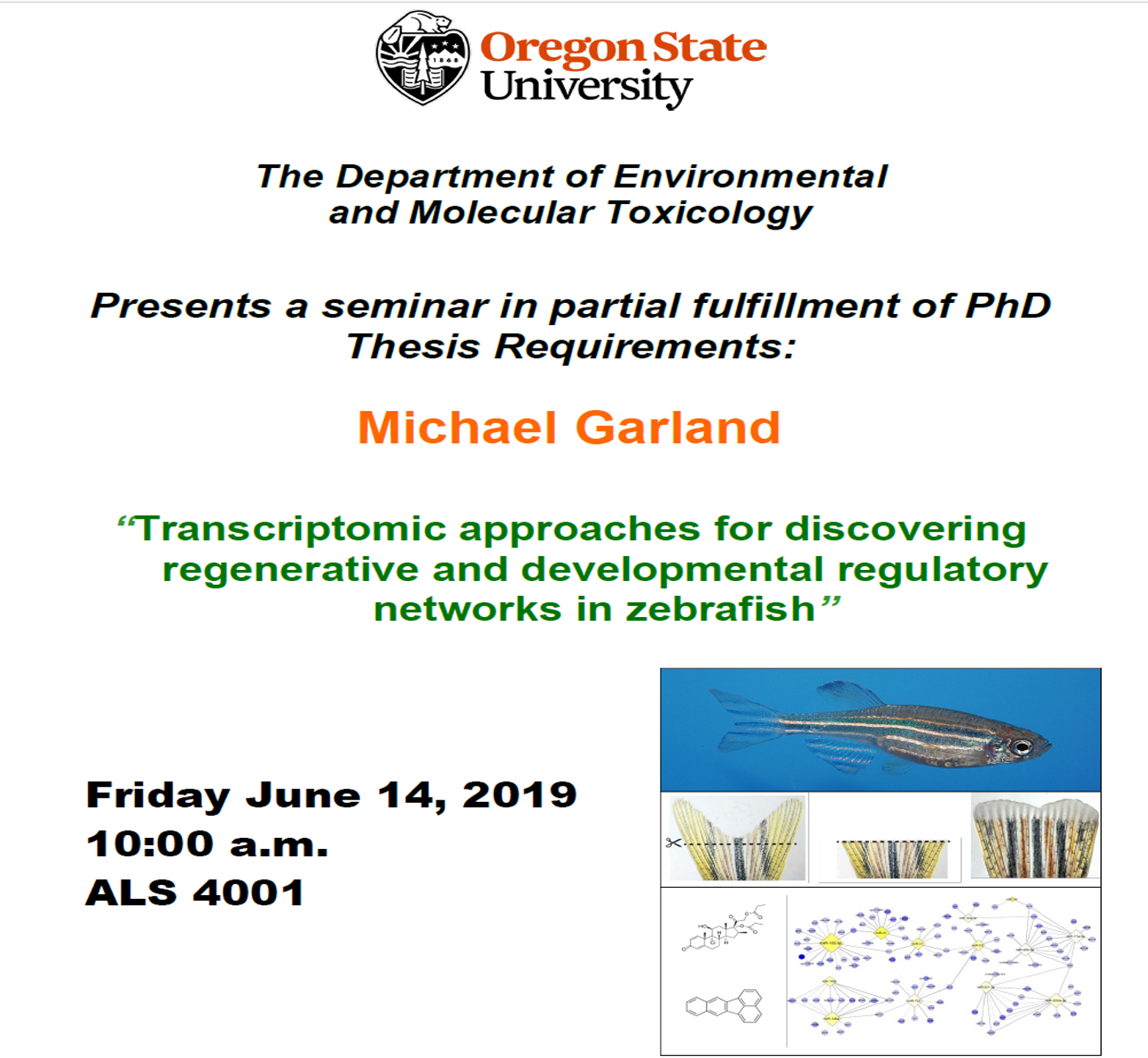This publication below was highlighted as an extramural paper of the month in the latest issue of the NIEHS newsletter Environmental Factor.

Dr. Tanguay was recently award a grant to study the toxicity of per- and polyfluoroalkyl substances (PFAS) in zebrafish. The grant and testing procedures were featured in a Jefferson Public Radio story.


In the June 2019 issue of Superfund Research Program e-Post Notes!
Excerpts:
Robyn Tanguay of the Oregon State University (OSU) SRP Center was recently quoted in local news outlets about OSU’s $2 million in funding from the EPA to study the toxicity of per- and polyfluoroalkyl substances (PFAS) using zebrafish and rodents. They will be evaluating whether exposure to these chemicals potentially leads to autism, cancer, or neurodegenerative diseases. The Tanguay lab uses zebrafish to understand how exposure to complex mixtures of polycyclic aromatic hydrocarbons impact health.
According to a new study from the OSU SRP Center, combining data from zebrafish and flat worms may be useful in understanding how hazardous substances impact development and behavior.
Researchers exposed zebrafish and flat worms to 87 chemicals from five different chemical classes, including pharmaceutical drugs, flame retardants, polycyclic aromatic hydrocarbons, and pesticides. Negative effects caused by the chemicals included developmental delays, physical abnormalities, death, and altered behavior. Effects were observed in zebrafish for 86 of 87 chemicals, while worms exhibited impacts for 50 out of the 87.
Though zebrafish experienced effects from more chemicals compared to flat worms, both provided valuable information about chemical impacts during development. Studies in zebrafish revealed more information about physical abnormalities caused by chemicals, whereas flatworms demonstrated more behavioral impacts. The researchers also compared their results to 28 of the chemicals that had previously been tested with rodents. They found most chemicals that were toxic to rodents were also toxic to zebrafish and flat worms.
According to the authors, although zebrafish and flat worm models are unlikely to capture all chemicals that are hazardous to human health, they may be beneficial as a primary screening tool to prioritize chemicals for further study. Combining data from alternative model organisms, such as fish and worms, may be more cost-effective and time-efficient than carrying out chemical toxicity studies on rodents.
Both Yvonne Rericha and Lindsay Wilson will be joining the lab this Summer 2019! They be working with PFAs and PAHs. Welcome!
